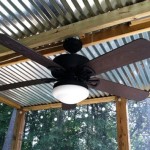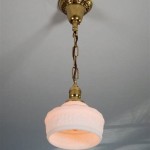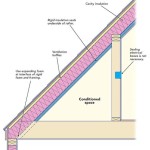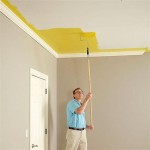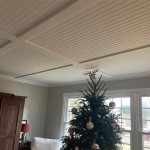Can You Hang A Mobile From The Ceiling? A Comprehensive Guide
Hanging a mobile from the ceiling is a common practice, often employed for decorative purposes, particularly in nurseries, children's rooms, and even living spaces. The appeal of a mobile lies in its dynamic nature, bringing movement and visual interest to an environment. However, before undertaking this project, it is crucial to consider several factors to ensure a secure, aesthetically pleasing, and, most importantly, safe installation. This article will explore the prerequisites, techniques, and precautions associated with hanging a mobile from the ceiling.
The suitability of hanging a mobile from a ceiling depends on several interacting facets. These include the ceiling's material composition, the mobile's weight and size, the intended purpose of the mobile (decorative or interactive), and prevailing safety considerations, particularly when installing a mobile in a child's room. A careful assessment of these variables is paramount to making an informed decision.
Determining Ceiling Material and Load-Bearing Capacity
The type of ceiling is arguably the most critical factor influencing the feasibility and method of hanging a mobile. Common ceiling materials include drywall, plaster, concrete, and suspended tile. Each material presents unique challenges and requires specific hardware to ensure a secure and lasting hold.
Drywall, a ubiquitous material in modern construction, is relatively weak and not inherently designed to bear significant weight. Hanging a mobile directly from drywall without appropriate anchors can lead to the anchor pulling out, causing the mobile to fall. Therefore, it is imperative to use anchors specifically designed for drywall applications. These anchors distribute the mobile's weight over a larger surface area, providing increased stability. Examples include toggle bolts, drywall anchors with screws, and self-drilling drywall anchors. The weight rating of the chosen anchor should substantially exceed the mobile's weight to provide a safety margin.
Plaster ceilings, while often stronger than drywall, can be brittle and prone to cracking. Similar to drywall, direct attachment without proper anchors is discouraged. When working with plaster, pre-drilling a pilot hole is essential to prevent the plaster from chipping or crumbling. Toggle bolts and plaster anchors are suitable options. Again, prioritize anchors with adequate weight capacity and consider the age and condition of the plaster, as older plaster may be more fragile.
Concrete ceilings offer a far more robust anchoring surface. However, installing hardware in concrete requires specialized drilling equipment and anchors. Concrete anchors, such as wedge anchors, sleeve anchors, or concrete screws, are designed to expand within the pre-drilled hole, creating a firm grip. A hammer drill is typically necessary to create the pilot hole. Safety glasses and dust masks are vital when drilling into concrete to protect against debris and respiratory irritation.
Suspended tile ceilings present the greatest challenge, as the tiles themselves are not designed to bear weight. In this scenario, the mobile should be suspended from the ceiling grid that supports the tiles. Specialized clamps are available that attach to the grid runners, providing a secure attachment point without damaging the tiles. Alternatively, it may be possible to access the structural ceiling above the suspended ceiling and anchor into that surface, although this requires careful planning and access to the space above the tiles.
Beyond the ceiling material, the overall load-bearing capacity is a crucial consideration. Determine the weight of the mobile and select an anchor rated for a significantly higher weight. This “safety factor” accounts for potential dynamic loads caused by movement or accidental bumps. It is always preferable to over-engineer the installation rather than risk failure.
Mobile Weight, Size, and Placement Considerations
The weight and size of the mobile directly influence the type of anchor required and the suitability of the chosen mounting location. Heavier mobiles necessitate stronger anchors and potentially require reinforcement of the ceiling structure. Larger mobiles can exert greater leverage on the anchor point due to their increased surface area and potential for wind resistance (if near a window or vent).
The mobile's overall dimensions impact the optimal placement. Consider the available headroom and the potential for the mobile to interfere with movement or other objects in the room. Position the mobile at a height that allows for unobstructed passage underneath and avoids accidental contact. In a nursery setting, mobiles intended for visual stimulation should be positioned at a distance that is easily viewable by the infant without being directly overhead, as this can potentially cause eye strain. Typically, a distance of 8-12 inches from the infant's face is recommended.
The mobile's design also plays a role. Mobiles with complex or delicate components may be more susceptible to damage from accidental bumps or excessive movement. Choose a location where the mobile is less likely to be disturbed. If the mobile contains small parts, ensure it is securely assembled to prevent pieces from detaching and posing a choking hazard to young children.
Consider the surrounding environment when determining placement. Avoid hanging mobiles directly above cribs or beds where a falling mobile could cause injury. Maintain a safe distance to prevent children from reaching and pulling on the mobile. Consider the proximity of light fixtures, windows, and HVAC vents, as these can impact the mobile's movement and visual appearance.
Safety Precautions and Installation Techniques
Safety is paramount when hanging a mobile, particularly in environments occupied by children. A poorly installed mobile poses a significant safety hazard. Before beginning the installation process, gather all necessary tools and materials, including a drill (if needed), appropriate anchors, a screwdriver or wrench, a level, a measuring tape, and safety glasses.
Begin by carefully marking the desired location for the anchor point. Use a stud finder to identify the location of ceiling joists if possible. Anchoring directly into a joist provides the most secure hold. If a joist is not accessible, select an appropriate anchor based on the ceiling material and the mobile's weight. Pre-drill a pilot hole according to the anchor manufacturer's instructions. The pilot hole should be slightly smaller than the anchor's diameter to ensure a snug fit.
Install the chosen anchor according to the manufacturer's instructions. Ensure the anchor is fully seated and securely fastened. Test the anchor's strength by gently pulling on it before suspending the mobile. If the anchor feels loose or unstable, remove it and try a different type of anchor or relocate the mounting point.
Once the anchor is securely installed, attach the mobile using a sturdy hook or connector. Ensure the connection is secure and that the mobile hangs straight and level. Use a level to verify the mobile's orientation. Adjust the hanging height as needed to achieve the desired visual effect and maintain a safe distance from the floor or other objects.
Regularly inspect the anchor and the mobile's suspension hardware for signs of wear or loosening. Tighten any loose screws or connections. Replace any damaged or worn components immediately. If the mobile begins to sag or wobble, re-evaluate the anchoring system and consider reinforcing the installation.
When installing a mobile in a nursery or child's room, prioritize safety above all else. Use child-safe materials and ensure the mobile is designed to minimize the risk of entanglement or entrapment. Periodically assess the mobile's placement and condition as the child grows and develops. As the child becomes more mobile and capable of reaching, consider removing the mobile entirely to prevent accidents.
Properly installed and maintained ceiling fans may also present difficulties if one plans to hang a mobile nearby. A fan's rotational movement can interfere with the mobile by creating drafts. The mobile's components may hit the fan blades, damaging both. To be safe, consider not installing mobiles near ceiling fans.
By carefully considering the ceiling material, the mobile's weight and size, and adhering to strict safety precautions, it is feasible to hang a mobile from the ceiling safely and effectively. However, if there is any doubt about one's ability to perform the installation properly, it is always advisable to consult with a qualified professional or hire a contractor to ensure a secure and lasting installation.
How Do You Hang Your Mobiles We Montessori

Simple Ways To Hang A Mobile From The Ceiling 13 Steps

Simple Ways To Hang A Mobile From The Ceiling 13 Steps
How Do You Hang Your Mobiles We Montessori

Simple Ways To Hang A Mobile From The Ceiling 13 Steps

How To Make A Nursery Mobile Young House Love

Diy Baby Mobile How To Make A Bird

How To Make A Mobile

How To Hang A Mobile Above Baby S Crib

Diy Baby Mobile Andrea Dekker
Related Posts

